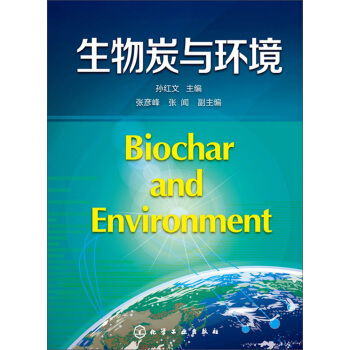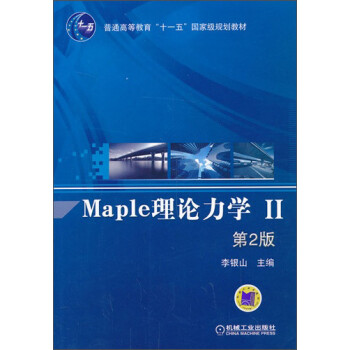![生物材料:纳米方法(导读版) [Biomaterials:A Nano Approach]](https://pic.tinynews.org/10944506/5398fcdbN013615eb.jpg)

具体描述
编辑推荐
主要特点全面讲解生物材料历史、现在和未来发展趋势,涵盖纳米生物材料及其潜在应用。
写作方式通俗易懂,图文并茂,包含最新数据的图表。
用纳米生物材料的概念整合材料科学与工程、纳米技术、生物工程和生物科学。
适合生物材料、化学化工、组织工程等领域的师生、科研人员阅读参考。
内容简介
本书全面介绍了纳米生物材料的基本概念、多种过程方法、表征方法及其潜在的应用。首先介绍了生物材料的发展概况、人体生物学基础,然后介绍了生物材料的代谢与腐蚀,讨论了多种生物材料,如金属生物材料、陶瓷生物材料、聚合物生物材料、多功能生物材料等,最后介绍了组织工程纳米生物材料。本书适合生物工程、材料、医学工程等相关专业的学生、研究人员及科技人员、管理人员阅读。目录
序前言
致谢
关于本书
作者
1 生物材料概述
1.1 引言
1.2 生物材料:从过去到现在
1.3 生物材料的影响
1.4 生物材料的特点
1.5 生物材料的分类
1.5.1 金属生物材料
1.5.2 陶瓷生物材料
1.5.3 聚合生物材料
1.5.4 复合生物材料
1.6 生物材料的表面修饰
1.7 生物材料的最新趋势
1.7.1 纳米生物材料:新一代生物材料
1.7.2 纳米生物材料合成方法
1.7.2.1 溶胶凝胶合成法
1.7.2.2 仿生合成法
1.7.2.3 组织工程法
1.8 小结
术语表
参考文献
2 人体生物学基础
2.1 引言
2.2 人体的结构与功能
2.3 化学水平
2.4 细胞水平
2.4.1 细胞核
2.4.2 细胞质
2.4.3 细胞膜
2.4.3.1 跨膜运输
2.5 组织水平
2.5.1 上皮组织
2.5.2 结缔组织
2.5.3 肌肉组织
2.5.4 神经组织
2.6 器官水平
2.6.1 皮肤
2.6.2 骨
2.7 系统水平
术语表
参考文献
延伸阅读
3 生物材料的降解和腐蚀
3.1 引言
3.2 表面特性
3.3 生物材料的降解
3.4 生物材料的腐蚀
3.4.1 电化学腐蚀
3.4.2 裂隙腐蚀
3.4.3 点状腐蚀
3.4.4 晶间腐蚀
3.4.5 应力腐蚀
3.4.6 摩擦腐蚀
3.5 腐蚀测试方法
3.6 植入物的生物相容性
3.6.1 体外实验方法
3.6.2 体内实验方法
3.7 案例研究
3.8 小结
术语表
参考文献
延伸阅读
4 生物材料的摩擦学和植入失败
4.1 引言
4.2 形变力学
4.2.1 弹性形变
4.2.2 塑性形变
4.3 生物材料的形变分析
4.4 断裂力学
4.5 断裂分类
4.5.1 脆性断裂
4.5.2 韧性断裂
4.6 生物材料从脆性断裂到韧性断裂的过渡
4.7 断裂韧性
4.8 生物材料的韧性分析
4.9 疲劳力学
4.10 生物材料的疲劳分析
4.11 摩擦学
4.11.1 摩擦
4.11.2 磨损
4.12 生物材料的摩擦学分析
4.13 案例研究
4.14 小结
术语表
参考文献
延伸阅读
5 纳米现象
5.1 引言
5.2 纳米现象
5.2.1 纳米尺度的材料性能
5.3 纳米材料的合成
5.3.1 自顶向下法
5.3.2 自底向上法
5.4 表征技术
5.4.1 X射线衍射和散射法
5.4.2 电子显微镜
5.4.3 扫描探针显微镜
5.4.4 光散射技术
5.4.5 气体吸附测试
5.5 纳米材料的环境因素与安全因素
5.6 小结
术语表
参考文献
延伸阅读
6 金属生物材料
6.1 引言
6.2 金属生物材料
6.2.1 不锈钢
6.2.2 钴铬合金
6.2.3 钛及钛合金
6.2.4 形状记忆合金
6.2.5 牙科汞合金
6.2.6 贵金属及其他金属
6.3 纳米结构金属植入材料
6.4 案例研究
6.5 小结
术语表
参考文献
7 陶瓷生物材料
7.1 引言
7.2 生物陶瓷
7.2.1 近惰性生物陶瓷
7.2.2 多孔生物陶瓷
7.2.3 生物活性陶瓷
7.2.3.1 生物活性玻璃
7.2.3.2 磷酸钙陶瓷
7.2.4 生物可吸收性陶瓷
7.3 纳米结构生物陶瓷
7.4 纳米生物陶瓷的合成和表征
7.4.1 纳米氧化铝陶瓷的合成和表征
7.4.2 纳米磷酸钙陶瓷的合成和表征
7.5 案例研究
7.6 小结
术语表
参考文献
8 聚合生物材料
8.1 引言
8.1.1 聚合过程
8.1.1.1 加聚
8.1.1.2 缩聚
8.1.2 聚合物的类型
8.1.3 影响聚合物性质的因素
8.1.3.1 分子质量
8.1.3.2 分子结构
8.1.3.3 分子间作用力
8.1.3.4 聚合物的结晶度
8.1.4 聚合物的表征
8.2 聚合物作为生物材料
8.3 聚合生物材料的分类
8.4 天然聚合物
8.4.1 胶原
8.4.2 明胶
8.4.3 壳聚糖
8.5 合成聚合物
8.5.1 非生物降解合成聚合物
8.5.1.1 聚甲基丙烯酸甲酯
8.5.1.2 聚乙烯
8.5.1.3 聚对苯二甲酸乙二酯
8.5.2 生物降解合成聚合物
8.5.2.1 聚乳酸
8.5.2.2 聚乙交酯
8.5.2.3 聚乳酸羟基乙酸
8.6 聚合纳米生物材料
8.7 聚合纳米纤维加工
8.7.1 牵引
8.7.2 模板合成
8.7.3 自组装
8.7.4 相分离
8.7.5 电纺丝:新方法
8.7.5.1 实验系统
8.7.5.2 纺丝机理
8.8 电纺丝聚合纳米纤维支架
8.8.1 胶原纳米纤维支架
8.8.2 明胶纳米纤维支架
8.8.3 壳聚糖纳米纤维支架
8.8.4 聚乳酸纳米纤维支架
8.8.5 聚乙交酯纳米纤维支架
8.8.6 聚乳酸羟基乙酸纳米纤维支架
8.9 聚合纳米纤维生物医学应用
8.9.1 医学修复术
8.9.2 牙齿修复
8.9.3 伤口敷料
8.9.4 药物传递
8.9.5 组织支架
8.10 小结
术语表
参考文献
9 复合生物材料
9.1 引言
9.2 复合生物材料的分类
9.2.1 纤维复合生物材料
9.2.2 微粒复合生物材料
9.3 复合生物材料的生物反应
9.4 复合生物材料生物医学应用
9.4.1 骨折修复
9.4.1.1 接骨板和接骨螺钉
9.4.2 关节置换术
9.4.2.1 全髋关节置换术
9.4.3 骨移植材料
9.4.4 牙科应用
9.4.4.1 牙齿修复材料
9.4.4.2 牙科根管桩
9.4.4.3 牙科正畸弓丝和托槽
9.5 纳米复合材料的发展
9.6 纳米复合物:新一类纳米材料
9.7 传统纳米复合物
9.8 仿生纳米复合物
9.9 组织工程纳米复合物
9.10 纳米复合物用于输送生长因子
9.11 小结
术语表
参考文献
10 应用于组织再生的纳米生物材料
10.1 引言
10.2 组织工程的概念
10.3 干细胞的美好愿景
10.3.1 间充质干细胞
10.4 纳米生物材料:新一代支架材料
10.5 支架的特征
10.6 支架材料的类型
10.6.1 陶瓷类纳米生物材料
10.6.2 聚合物类纳米生物材料
10.7 纳米生物材料用于支架设计
10.8 组织工程陶瓷纳米生物材料
10.9 组织工程聚合物纳米生物材料
10.10 应用于细胞工程的生物材料模板
10.10.1 化学模板
10.10.1.1 微接触印刷式模板
10.10.2 拓扑图形模板
10.10.2.1 纳米压痕平版印刷术
10.11 组织工程产品:人工皮肤和人工软骨
10.12 案例研究
10.13 小结
术语表
参考文献
索引
精彩书摘
1Overview of Biomaterials
1.1 Introduction
Human life is invaluable; however, quality and survival of life is greatly
affected by numerous factors, including medical complications caused by
diseased, damaged, or aged tissues or organs. These circumstances often call
for surgical treatments to repair, replace, maintain, or augment the functions
of affected tissues or organs using some additional functional components.
Traditionally, they have been treated with the help of tissues or organs procured
from patients or donors. Depending on the location of reimplantation
of the procured tissue (also known as graft), they are termed autograft,
allograft, or xenograft (see Figure 1.1).
If the graft is implanted in the same patient, it is termed autograft and if
it is placed in another individual of the same species, it is termed allograft.
If the graft is placed in another species (e.g., bone from animal to human),
then it is termed xenograft. Among them, autograft is considered the gold
standard and has been used for a long time with good clinical results, but
the supply of autograft is limited. In addition, allograft and xenograft are
not much preferred because of the possibility of pathogen transfer and graft
rejection. Furthermore, tissue/organ procurement is complex, expensive, and
requires additional surgery. As an alternative, attention has been focused on
the use of synthetic material that holds the ability to repair or restore the
functions of a defective system into a normal healthy system upon implantation,
which is termed alloplastic graft. The synthetic material used for this
purpose is called biomaterial. The biomaterial is used either as such or to
manufacture implantable devices or prostheses; some of them are illustrated
in Figure 1.2.
Currently, there are many definitions for the term “biomaterial,” depending
on the user’s own verdict. Biomaterial by definition is a substance or a combination
of substances, other than drugs, derived either from natural or synthetic
origin, which can be used for any period of time as a whole or as a part
of the system that treats, augments, or replaces any tissue, organ, or function
of the body (Williams 1987). Later, Black (1992) defined the term biomaterial
as a material of natural or manmade origin that is used to direct, supplement,
or replace the functions of living tissues of the human body. A biomaterial
is delineated, according to authors’ own description, as any material that
is used for repairing or restoring the functionality of a defective biological
system into a normal healthy system.
The field “biomaterials science and engineering” is a multidisciplinary
theme that essentially coalesces materials science and engineering with
biomedical sciences for the invention of new health-care systems. Since it
is a multidisciplinary field, many experts, in particular materials scientists
and engineers, mechanical engineers, physicists, chemists, biologists, and
clinicians must work together for its continuous development. It has also
witnessed
stable growth over about half a century of existence with the major
contribution from these experts. However, further research and development
is directed at the design and fabrication of novel biomaterials that hold the
features and properties analogous to natural tissues or organs. In the following
section, some imperative successes that have come in the biomaterials
field are provided.
1.2 Biomaterials: From Then to Now
The use of biomaterials to repair human body parts is not new, dating far back
into ancient civilizations. The Egyptians used linen as a suture for wound
closure in around 2000 BC. They also used elephant’s tusks, walrus teeth,
and some kinds of wood to replace bone or missing teeth (Williams and
Cunninghan 1979). Substitution of bone parts in the human body was also
carried
out at that time using copper, but the implant was not successful due
to the effect of copper ion poisoning. As per historical evidence,
the Indians
and the Chinese used waxes, glues, and tissues in reconstructing defective
parts of the human body. It was stated in the Vedic period (1800?1500 BC) of
the ancient Indian literature that artificial legs, eyes, and teeth were used. In
those days, Hindu surgeons performed surgery using autogeneous tissues
for restoring missing parts. Around 600 BC, Sushruta repaired an injured
nose with a patch of living flesh taken from the region of the cheek (Bhat
2002). Around 200 BC, the Greek literature pointed out the use of metals
(e.g., gold). Hippocrates, who is known as the father of medicine, alleged
that metallic wires made of gold might have been used for the treatment of
bone fractures at that time. In the seventeenth century, iron and bronze were
employed in human systems, but they are more corrosive than gold. Some
of the major developments that have occurred in biomaterials are summarized
in Table 1.1 (Park 1984, 2003; Sportnitz 1987; Friedman 1994; Greco 2005;
Murugan 2005a, 2005b).
The first reported clinical application of biomaterials was carried out in
the mid-eighteenth century. In 1759, Hallowell united the edges of a lacerated
brachial artery using a wooden peg and twisted thread (Wesolowski
1963). The use of biomaterials has progressed much since his initial contribution.
By the mid-nineteenth century, Mathijsen introduced a notable
material called lint-reinforced plaster as a bandage in the treatment of bone
fractures. In those days, however, infection was the most common problem
of the materials that were implanted in the human body. Due to the
threat of infection, clinical application of biomaterials was not very successful.
In the 1860s, Lister introduced aseptic techniques, which made some
significant changes in the surgical implant procedures and paved ways
to realize the potential of biomaterials. In 1860, catgut was one of the first
naturally occurring materials used as a suture for wound closure. In 1880,
Gluck used ivory clamps and, in 1989, Jassinowsky used silk on fine curved
needles to repair vessels. In this period, Lane introduced metallic implants
for orthopedics.
The twentieth century was a milestone in the field of biomaterials because
most of the currently used biomaterials and surgical implants were developed
in this period. The practice of using metals and alloys to repair or
replace human body parts was well established at that time. The first metallic
bone plate made of vanadium steel was introduced in 1912 by Sherman,
but it was not very successful because of mechanical failure, corrosion, and
poor biocompatibility. Since this initiation, many metallic implants have been
introduced into the surgical field. Bone plates are surgical tools that are used
to assist in the healing of broken and fractured bones. It is worth pointing
out that bone plates are designed essentially to be very strong and absorb the
large stress forces generated when the bone moves. On the other hand, corrosion
is also a significant concern that typically leads to the disintegration of
Source: Adapted from Park, J. B., Biomaterials science and engineering, Plenum Press, New
York, 1984; Spotnitz, H. M., Handbook of biochemistry, McGraw-Hill, New York, 1987;
Park, J. B. and Bronzino, J. D., Biomaterials principles and applications, CRC Press,
Boca Raton, FL, 2003; Friedman, D. W., Orland, P. J., and Greco, R. S., Implantation
biology, CRC Press, Boca Raton, FL, 1994; Bhat, S. V., Biomaterials, Alpha Science
International, Pangbourne, 2002; Greco, R. S., Prinz, F. B., and Smith, R. L. Nanoscale
technology in biological systems, CRC Press, Boca Raton, FL, 2005; Murugan, R. and
S. Ramakrishna, Handbook of nanostructured biomaterials and their applications in
Nanobiotechnology, American Scientific Publishers, Stevenson Ranch, CA, 2005a;
Murugan, R. and S. Ramakrishna, Comp. Sci. Tech., 65, 2385, 2005b.
前言/序言
用户评价
这本书的封面设计真是吸引人,深邃的蓝色背景上,用银色线条勾勒出的分子结构仿佛在闪烁着智慧的光芒。我一直对生物材料领域充满了好奇,特别是纳米技术在其中的应用,总觉得这是未来医学和工程学的关键突破点。虽然我并非专业人士,但从这本书的名字“生物材料:纳米方法(导读版)”就能感受到它试图以一种更易于理解的方式,引导读者走进这个复杂而迷人的世界。我尤其期待它能解释清楚,为什么“纳米”这个尺度如此重要,它如何改变了材料本身的特性,又如何使得材料能够与生物体进行更精妙的互动。书中是否会介绍一些具体的纳米生物材料的例子?比如那些用于药物递送的纳米颗粒,或是用于组织工程的纳米支架?我希望导读版能帮助我建立起对这个领域的基本认知,理解其中的核心概念和研究思路,让我能够更好地与相关领域的专业人士交流,甚至在未来的学习和工作中,能够触及到这些前沿的科学技术。这本书的定位是“导读”,这让我感到非常安心,这意味着我不需要拥有深厚的专业背景也能有所收获,它就像一位经验丰富的向导,带领我在知识的海洋中 navigat。
评分作为一名对新兴科技充满好奇的读者,我被“生物材料:纳米方法(导读版)”这个书名深深吸引。生物材料本身就承载着修复、再生、辅助人体的重任,而“纳米方法”的加入,无疑为这个领域注入了前所未有的活力和精准性。我非常期待这本书能够揭示纳米技术如何改变了我们对生物材料的理解和设计。它会讲解为什么在纳米尺度上,材料的物理化学性质会发生显著变化吗?比如,更大的表面积-体积比如何影响其与生物分子的相互作用?又或者,书中是否会详细介绍一些具体的纳米生物材料,例如用于药物释放的纳米胶束、用于组织工程的纳米纤维支架、或者是用于生物成像的纳米探针?我更希望它能阐释这些纳米材料是如何与生物体进行“交流”的,例如,它们如何靶向特定的细胞或组织,又如何被生物体有效地清除,从而降低潜在的毒副作用。导读版的定位让我对这本书充满了信心,我相信它能以一种相对易懂的方式,为我打开认识纳米生物材料世界的一扇窗,并激发我进一步探索的兴趣。
评分从书名来看,这本书似乎将生物材料这个宽泛的概念,聚焦于纳米尺度上的应用,这让我眼前一亮。我们都知道,生物材料在修复、再生、诊断和治疗疾病方面扮演着越来越重要的角色,而纳米技术则为这些材料的设计和功能化提供了前所未有的可能性。我特别好奇书中会如何阐释“纳米方法”的具体内涵,它指的是设计和制备纳米尺寸的生物材料?还是利用纳米技术来理解生物材料与生物体之间的相互作用?我推测书中会涉及诸如纳米颗粒、纳米纤维、纳米涂层等多种纳米结构,以及它们在药物载体、生物传感器、组织工程支架等方面的具体应用。而且,我想知道书中会不会探讨纳米生物材料在生物相容性、降解性、靶向性等方面的优势,以及它们在体内如何被设计来规避免疫系统的排斥,或者如何精准地释放药物。我希望这本书能够让我对这些新兴的生物材料技术有一个直观的认识,理解它们是如何从实验室走向临床应用的,以及在未来的发展前景。这本书的封面设计简洁而富有科技感,深蓝色的主调搭配银色的分子结构图,暗示着其内容的前沿性和专业性。
评分这本书的书名“生物材料:纳米方法(导读版)”让我联想到了一系列令人兴奋的可能性。生物材料本身就是一个庞大且充满活力的领域,而将“纳米方法”作为切入点,无疑是将焦点对准了当今材料科学和生物医学研究的最前沿。我之所以对这本书产生浓厚兴趣,是因为我一直关注着那些能够改变我们生活、甚至拯救生命的创新技术,而纳米生物材料显然属于这一范畴。我非常期待书中能够深入浅出地介绍纳米尺度下材料的独特性质,以及这些性质如何被巧妙地应用于生物领域。例如,是否会介绍一些利用纳米材料来提高药物疗效、减少副作用的策略?或者,如何利用纳米技术来构建能够模拟天然组织结构的支架,用于再生医学?我希望这本书能够清晰地解释,为什么研究人员会选择在纳米尺度上设计和制造生物材料,以及这样做带来的具体好处。导读版的定位也让我感到鼓舞,这意味着它不会过于学术化,而是更侧重于科普和引导,帮助像我这样的非专业读者建立起对这个领域的初步理解和兴趣。
评分这本书的书名“生物材料:纳米方法(导读版)”给我的第一印象是,它将带领读者进入一个微观而神奇的世界,在那里,材料的尺度发生了翻天覆地的变化,从而也带来了全新的功能和应用。生物材料本身就与我们的健康息息相关,而纳米技术则像一把钥匙,打开了通往更高精度、更复杂生物交互的大门。我非常想知道,这本书是如何将“纳米方法”这一概念具体化,并与生物材料的研究相结合的。它是否会介绍一些特殊的纳米制造技术?例如,如何精确地控制纳米颗粒的大小、形状和表面化学性质?又或者,书中会详细探讨纳米生物材料在体内的行为,比如它们如何被吸收、分布、代谢和排泄?我尤其对书中可能涉及的纳米生物材料在疾病诊断和治疗方面的应用感兴趣,例如,是否会介绍那些能够用于早期癌症检测的纳米传感器,或者能够靶向肿瘤细胞进行精确打击的纳米药物载体。导读版的定位让我觉得这本书会是一个很好的起点,它能够帮助我构建起对这个复杂领域的整体认知框架,理解其中的基本原理和重要性。
评分不错的东西,下次还来买
评分好
评分书的质量相当不错,很满意!
评分导读版实际就是外文版,只有目录、前言有中文字。
评分正文都是英文,不是译本
评分不错的东西,下次还来买
评分挺不错的。。
评分正文都是英文,不是译本
评分挺好,就是英文版看着累
相关图书
本站所有内容均为互联网搜索引擎提供的公开搜索信息,本站不存储任何数据与内容,任何内容与数据均与本站无关,如有需要请联系相关搜索引擎包括但不限于百度,google,bing,sogou 等
© 2025 book.tinynews.org All Rights Reserved. 静思书屋 版权所有

![生命科学新经典:细胞分子探索(原著第5版) [The Cell A Molecular Approach(Fifth Edition)] pdf epub mobi 电子书 下载](https://pic.tinynews.org/10971248/d4dbc4dc-041a-47e1-9798-f86d7b189305.jpg)

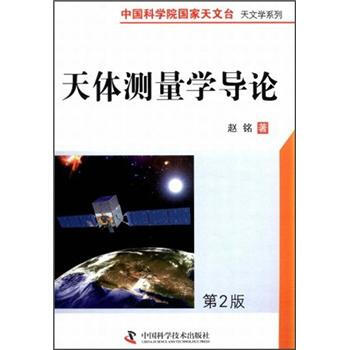


![生物衰老:研究方法与实验方案 [Biological Aging:Methods and Protocols] pdf epub mobi 电子书 下载](https://pic.tinynews.org/11028004/5398fd0cN3c0d9042.jpg)
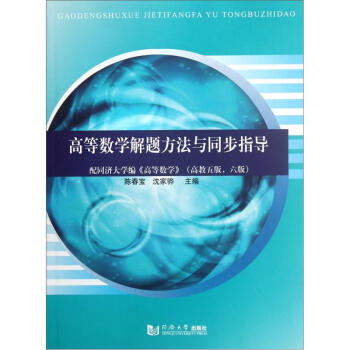


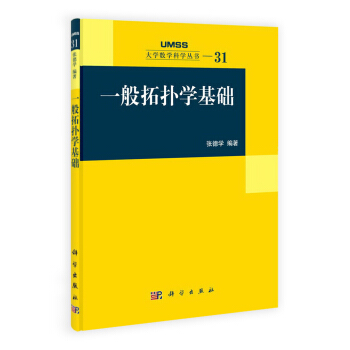




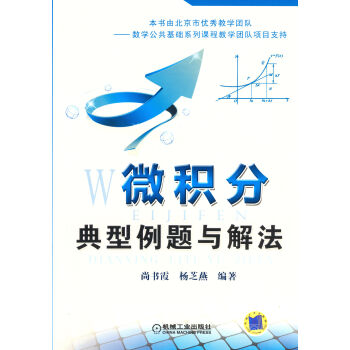


![有机化学(第4版)(下册)/高等学校教材 [Orgnic Chemistry] pdf epub mobi 电子书 下载](https://pic.tinynews.org/11318855/564150deNb2e3db3f.jpg)
